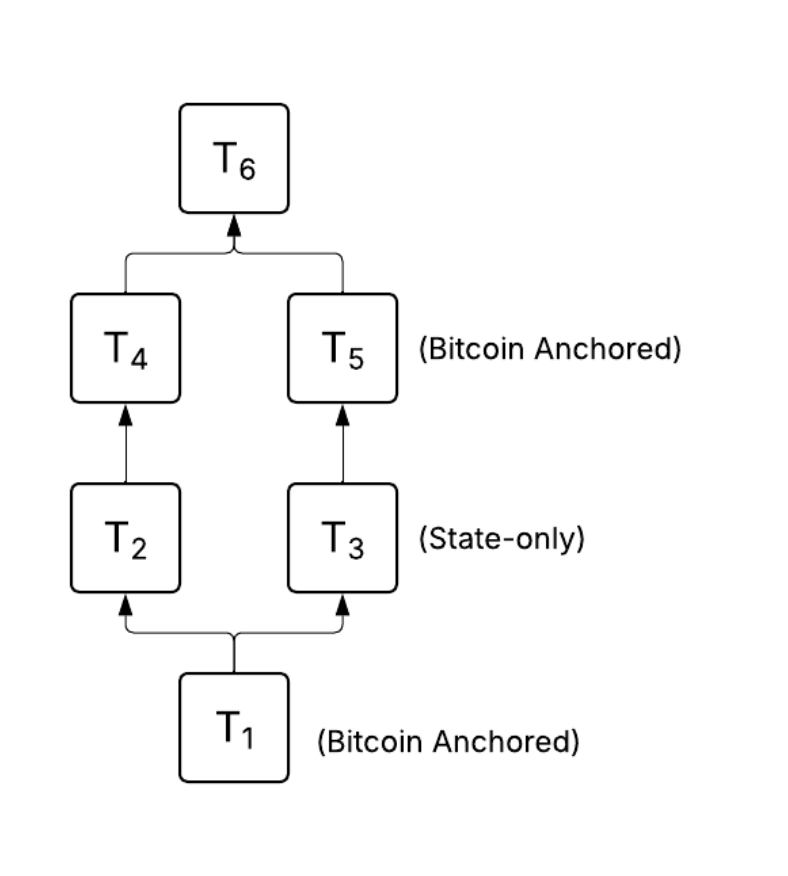DAG Transaction Dependency Graph
Unlike traditional blockchain systems with linear transaction processing, Arch Network employs a transaction specific Directed Acyclic Graph (DAG) structure. This approach enables more efficient parallelization, precise dependency tracking, and sophisticated state management when interacting with Bitcoin.
DAG Structure
The transaction graph in Arch Network consists of:
- Nodes: Individual transactions in the Arch network
- Edges: Dependencies between transactions, representing transactions that operate on the same accounts
Each transaction in the graph is represented by a structure that maintains:
- Previous transactions: direct dependencies that were processed first
- Next transactions: txs that depend on the current transaction
- Current node state:
- Anchored on Bitcoin or State-only (Arch only, no Bitcoin anchoring).
- Rolled back or Not Rolled back
This graph structure allows the system to maintain a complete picture of transaction relationships, which is crucial for handling complex potential state inconsistencies.
When a transaction fails, the system can precisely identify which other transactions are affected, allowing Arch to rollback only affected transactions.
Example DAG Flow

In this example:
- T1 is anchored to Bitcoin (confirmed) and initiates the transaction flow
- T2 and T3 depend on T1's state changes:
- T2 might update an account based on T1's result
- T3 represents a state-only operation that depends on T1
- T4 depends on T2, while T5 depends on T3, and are also anchored to Bitcoin
- T6 depends on both T4 and T5, requiring both to be valid for it to execute
State flow:
- When T1 confirms on Bitcoin:
- State changes are committed
- T2 and T3 become unlocked for execution
- If T5's anchoring fails:
- T5's state changes get rolled back
- T6 cannot proceed
- T3's state-only changes remain valid
Recovery Situation:
- If T1's Bitcoin tx gets reorg'd:
- All dependent txs are rolled back (T2-T6)
- If T5's Bitcoin anchoring fails:
- Only T5 and T6 are affected
- T2->T4 path remains valid
